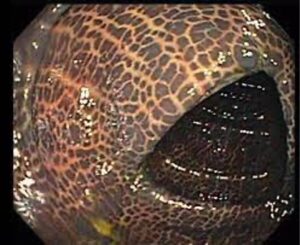Senna and Melanosis Coli
Laxatives are not needed by majority of people; yet they are self-prescribed by a large group of population. Long term laxative use can lead to various health issues. Let’s discuss about the side effect of one such laxative – ‘Senna’.
Senna is a anthraquinone derivative from senna plant. Senna in Arabic refers to ‘laxative plant’.
Senna is used as a stimulant laxative which induces bowel movements by directly stimulating the enteric nervous system and by releasing colonic electrolytes and fluids. Senna is poorly absorbed in the large bowel where it is hydrolyzed by the colonic bacteria into its active moeities which irritate the colon promoting peristalsis and evacuation of bowel.

Chronic use of senna leads to a characteristic brown pigmentation of the colon known as Melanosis Coli.

The active moieties of senna cause cell damage in the colon. During cell death, there is lipofuscin deposition. Lipofuscin is a dark pigment composed of oxidated residues of unsaturated fatty acids from cell membranes(The term melanosis is actually a misnomer as there is no melanin deposition). This pigment is eaten up by macrophages of the lamina propria which is visible as a dark pigmentation on colonoscopy and resolves after stopping the drug.
